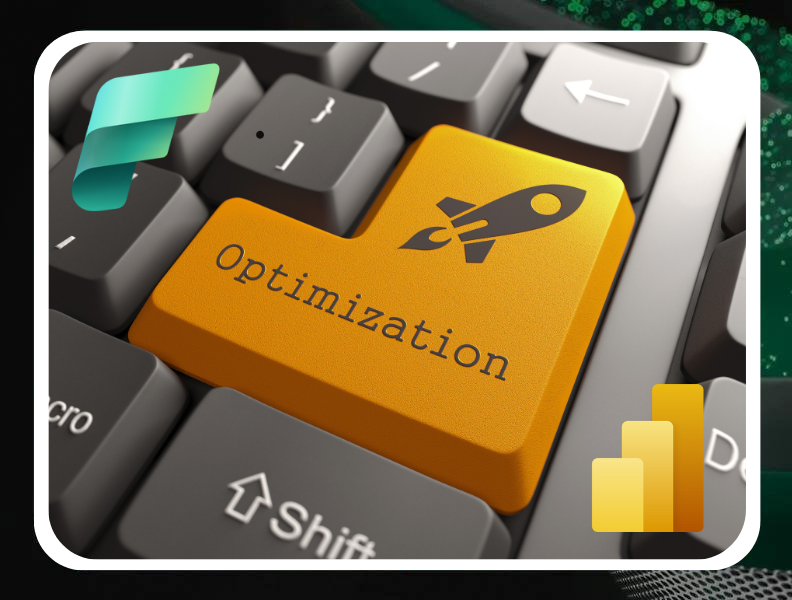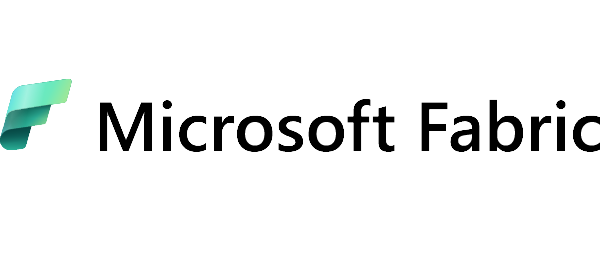
In recent years, there has been a significant rise in the role of data in decision-making processes. Tools for optimizing operational processes – such as Microsoft Fabric and Power BI – play a crucial role in effective data analysis, visualization, and utilizing insights for making informed business decisions. Properly collected, processed, and analyzed data allows companies to draw conclusions, monitor ongoing activities, and predict future needs.
In this article, we’ll take a closer look at two Microsoft solutions gaining increasing popularity: Power BI and Microsoft Fabric.
Microsoft Fabric – A comprehensive approach to data management
Microsoft Fabric is a modern, end-to-end analytics platform that integrates various functions related to data processing, storage, analysis, and sharing within a single workspace. It combines technologies like Data Factory, Real-Time Intelligence, Power BI, and OneLake – all within Microsoft’s cloud environment.
Designed for data teams, business analysts, and operational managers, this solution provides a unified tool for managing the full lifecycle of data.
How does Microsoft Fabric support process optimization?
Microsoft Fabric helps companies better organize and leverage their data, leading to greater transparency and operational efficiency. Here are some use case examples:
- Data Integration from Multiple Sources – Data from ERP, CRM, Excel, cloud apps, and local databases can be centralized and processed in one place.
- Data Processing Automation – With data pipelines, you can create ETL task schedules and maintain up-to-date operational data sets.
- Advanced Analysis Using Lakehouse and Notebooks – Data teams can work with large data sets, using Spark and Jupyter Notebooks to build analytical and predictive models.
- Simplified Data Sharing – Data can be quickly shared with other departments, accelerating information flow within the organization.
Benefits of implementing Microsoft Fabric:
- Centralized Data Environment – One tool instead of multiple independent systems accelerates and simplifies workflows.
- Greater Data Quality Control – Standardization and automation of processing reduce the risk of errors.
- Scalability – Thanks to Microsoft Cloud, the system grows along with the company’s needs.
- Key Microsoft Fabric element – Power BI – Data processed in Fabric can be immediately visualized and analyzed in Power BI, ensuring a smooth transition from raw data to actionable insights.
Power BI – Interactive data analysis for operational efficiency
Power BI is a Business Intelligence tool from Microsoft that enables the creation of interactive reports and dashboards based on data from various sources – from ERP and CRM systems to Excel, cloud data, and social media. With its integration into multiple environments, users can analyze key information in one place and make data-driven decisions.
Who is it for?
Power BI is used by data analysts, operational departments, management, and executives. The tool is intuitive enough for non-technical users, yet advanced enough to meet the needs of data specialists.
How Does Power BI Support Process Optimization?
Power BI significantly streamlines the analysis of operational data and the identification of areas for improvement. Here are some practical examples of its use:
- Real-Time KPI Monitoring – Dashboards display up-to-date data, such as the number of orders completed, support response times, or stock levels.
- Team or Machine Efficiency Analysis – Users can compare the performance of individual units, track results over time, and identify best practices.
- Bottleneck Detection in Processes – By analyzing operational data, it’s easy to pinpoint moments when the workflow slows or stops.
Key Benefits:
- Intuitive Dashboards Available 24/7 – Data is accessible both on computers and mobile devices, offering full insights into the company’s status at any time, anywhere.
- Faster Decision-Making – With clear data visualization and real-time updates, companies can respond quickly to changing conditions.
- Automated Reporting – Power BI eliminates the need for manual report preparation, allowing teams to focus on analysis and recommendations rather than data collection.
Conclusion – choosing the right tools for operational process optimization
Utilizing advanced analytical tools like Power BI and Microsoft Fabric is essential for optimizing operational processes in modern businesses. These solutions provide companies with full control over their data, enabling effective analysis and real-time monitoring of key performance indicators. Implementing such tools allows for faster decision-making, better forecasting of future trends, and optimization of operations across all levels of the organization.
Power BI delivers intuitive, interactive dashboards for quick monitoring of operational results in real time, while Microsoft Fabric (which includes Power BI) offers a comprehensive platform for data integration, processing, and analysis, supporting data teams and analysts in more advanced tasks.
Want to learn How Power BI and Microsoft Fabric can support your business in operational optimization?
Contact us! Our experts will be happy to provide details and help implement the right solutions that will accelerate your business growth.



